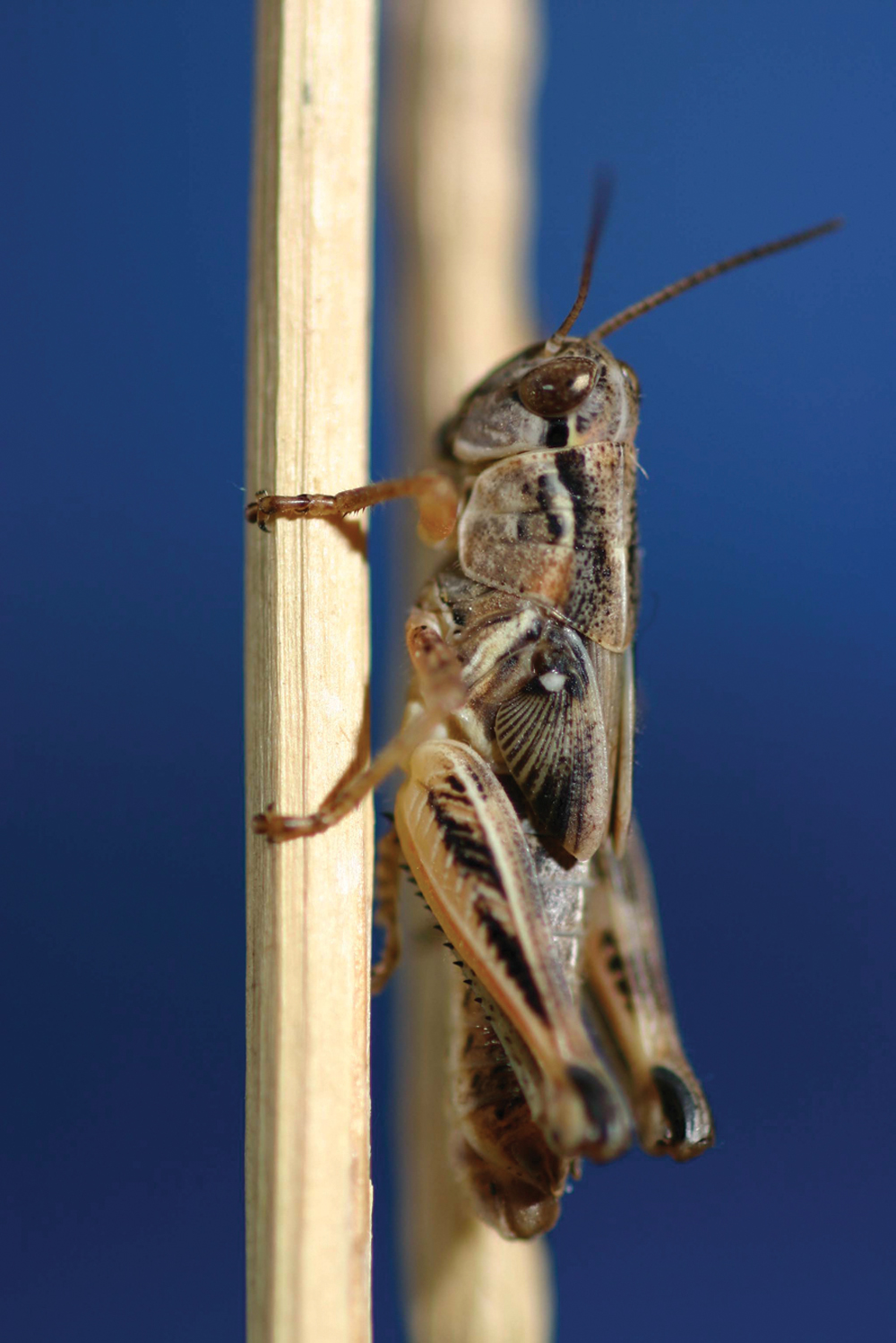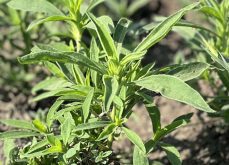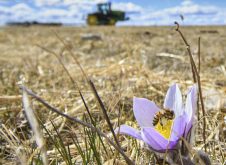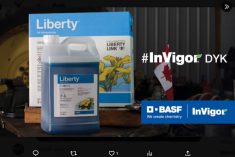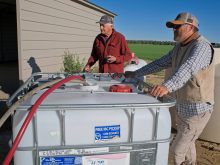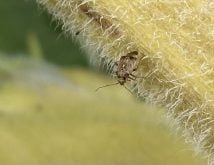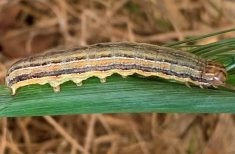As of mid-February, if western Canadian farmers want to control common crop insect pests such as grasshoppers and flea beetles in 2023, they should plan to do it without the use of popular lambda-cyhalothrin products such as Matador and Silencer.
Those products and others based on the lambda-cy active ingredient aren’t banned, but Health Canada’s Pest Management Regulatory Agency (PMRA) has ruled as of April 29 this year, any crops treated with lambda-cy insecticides cannot be used for livestock feed.
That “feed” reference, in one way or another, covers just about every grain, oilseed and pulse crop grown in Western Canada.
Read Also

Made-in-Manitoba sunflower hybrid headed to market
Manitoba’s confection sunflower growers will have a new seed option next spring developed specifically for performance in the province. The…
It is a confusing and oddball regulatory requirement most say isn’t based on science, is totally unworkable and will be difficult to enforce.
Furthermore, it could have far-reaching implications for both the crop and livestock sectors including international trade in feed products.
Producer commissions and commodity organizations from across the country have mounted a united appeal asking Health Canada and the PMRA to reverse or at least pause the implementation of the changed regulation. The effectiveness of that appeal is yet to be known.
In the meantime, as of late last year, Syngenta Canada and Adama, makers of Matador and Silencer insecticides, respectively, have pulled the products at least temporarily from the marketplace for the 2023 growing season.
While lambda-cy products are not available for 2023, several other insecticides with different active ingredients can be used for most common crop pests.
For a comprehensive list of alternatives for all major crops for 2023, visit this Saskatchewan Pulse Growers fact sheet, a joint effort produced with the support of SaskBarley, SaskCanola and SaskWheat.
While there are alternative products that can be used for insect control, industry observers raise this question: with a sudden shift in demand, will there be sufficient supply of these products?
Also, some farmers have pointed out lambda-cy products are not only effective on a wide range of pests, but they are cost effective as well. How do the alternatives stack up on the cost front?
The background
As a matter of course, agricultural chemicals are routinely reviewed or re-evaluated to ensure the registration data is still relevant and products aren’t posing a risk to human health or the environment.
The PMRA undertook a re-evaluation of lambda-cy products with a review completed in 2017. Similarly, the U.S. Environmental Protection Agency (EPA) also carried out a re-evaluation of lambda-cyhalothrin products registered in the United States.
The 2017 review led the PMRA to conclude lambda-cy products used on food crops posed no risk to human health or the environment, but “uses of lambda-cyhalothrin are cancelled since health risks were not shown acceptable when used according to the current conditions of registration” for several crops including “all feed uses.”
So, what’s wrong with the lambda-cy active ingredient prompting livestock feed use to be taken off of the label? What harm was it causing?
That’s the puzzling part — no one seems to know.
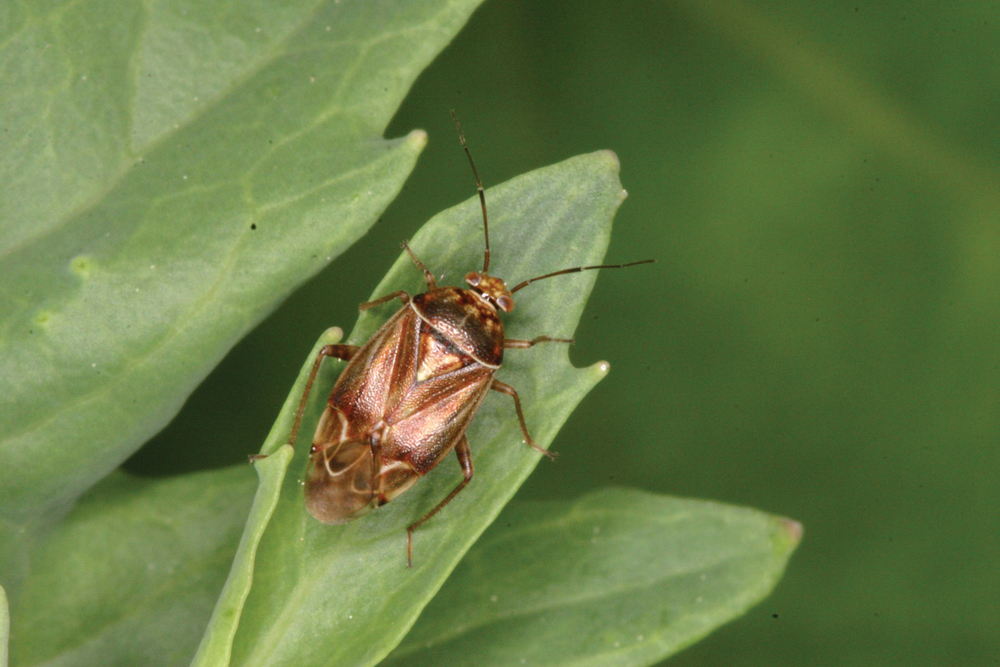
There has been no clear statement and, apparently, no scientific evidence that shows lambda-cyhalothrin was found to cause any environmental or animal health problems.
Although efforts were made to reach PMRA for comments, as of publication time no response had been received and no updates about the review ruling had been posted on the agency’s website.
Corey Loessin, a Saskatchewan farmer and a director at Saskatchewan Pulse Growers says, “To me, it is just a straight up error on the part of PMRA to designate feed as an off-label use with these products.”
Roger Chevraux, an Alberta farmer and Alberta Canola Producers Commission chair, says it appears the PMRA relied on some older data and technology to re-evaluate the chemistry, and, somehow, came to the conclusion there was a concern about the chemical being used on crops that produce livestock feed.
There wasn’t any scientific data, says Chevraux, but computer modelling indicated there may be a risk. That led to excluding feed crops from the label.
Shannon Sereda, senior manager of government relations and policy with the Alberta Wheat and Barley Commissions, agrees it’s a mysterious decision on the part of PMRA.
“Both the PMRA and EPA were reviewing the safety of lambda-cyhalothrin at the same time,” says Sereda. “The PMRA made the ruling that the product could be used on crops for human food, but not for feed use. The EPA reviewed their data and decided the product was safe for use on both food and feed crops.”
Sereda says the ruling that the insecticide cannot be used on crops for livestock feed is “unworkable.”
“So often it all depends on the cropping season and growing season conditions,” says Sereda. “Farmers just don’t know. They may seed a crop intended to be used for food processing, but because of weather or market changes six months down the road that crop could enter the livestock feed market. That’s why we say it is not a workable ruling.”
Sereda says the industry and commodity associations are asking the PMRA to hold off on a final decision until it has at least reviewed the same data set used by the EPA.
“We are not trying to interfere with the regulatory system, but we want to make sure all scientific data has been properly reviewed,” says Sereda.
She says if nothing changes before the April 29 ruling comes into effect, there are still many questions to be answered.
For example, what do farmers do with crops from 2022, still in the bin and on the farm, that may have been treated with lambda-cy products?
And particularly affecting the livestock industry, what about feedstocks such as corn and dry distillers grain produced in the United States, commonly imported for use in Canada? Would those feed products still be allowed?
Alternative products available
Western Canadian entomologists and agronomists agree that while the loss of lambda-cyhalothrin products for 2023 is a “great concern” it is some consolation for farmers to know there are alternative products to control pests on most crops.
John Gavloski, an extension entomologist with Manitoba Agriculture, Food and Rural Development, says producers must understand this is a temporary situation and not the end of lambda-cy insecticides.
“There seems to be a lot of misinformation regarding the lambda-cyhalothrin label amendments and resulting consequences,” he says. “We need to be careful not to spread myths that have been started and definitely do not want to imply the products have been banned or phased out.”
Gavloski says there are other synthetic pyrethroid products and chemistries to control most crop pests, but farmers will need to pay attention to label recommendations, product rates and timing, which may be different from what they are used to.
For example, alternative chemistries or products for canola might include deltamethrin (Decis, Poleci), permethrin (Pounce, Ambush, Perm-Up, Ipco Syncro) and cypermethrin (Up-Cyde, Ship).
Boyd Mori, a University of Alberta entomologist and assistant professor, says while it is difficult to predict pest severity for the coming crop year, it is expected some of the insect outbreaks in 2022 will persist.

“Of course, flea beetle is top of mind as it was a serious problem in many areas last year,” says Mori.
“Wheat midge has been on the rise in certain areas of east-central Alberta and Saskatchewan. Grasshoppers were a serious problem in parts of southern Alberta and Saskatchewan.
“Similarly, cutworms have been increasing in certain pockets. And diamondback moths don’t overwinter here, but with favourable conditions can be a problem. Farmers have to be prepared.”
Sarah Anderson, an agronomy manager with Saskatchewan Pulse Growers, says flea beetles, grasshoppers and aphids will continue to be a concern for Saskatchewan farmers in 2023.
“Thankfully, there are control options available. But farmers and agronomists need to be familiar with products to make sure they are used according to label recommendations.
“There may be changes in crop or insect staging and the best time to apply, so producers may need to be more creative to achieve proper control.”
In Manitoba, Morgan Cott, an agronomy extension specialist for special crops with Manitoba Crop Alliance (MCA), says farmers should look at older as well as new insecticide products available this year.
For MCA producers of wheat, flax, barley, corn and sunflowers, some of the key pests they’ll be watching for in 2023 include grasshoppers, European corn borer and army worms.
“For most pests on most crops there are effective alternative products available including some newer products,” she says. “Farmers will need to do their homework on which products will work the best.”
Cott did say one gap in the insecticide lineup if lamba-cy products can’t be used is one to effectively control lygus bugs on sunflowers. Otherwise, all other bases appear to be covered.
All four specialists say while it is comforting to know alternative products are available, the big question is whether they will be available during the growing season. Chemical companies say they will ramp up production, but only time will tell.


